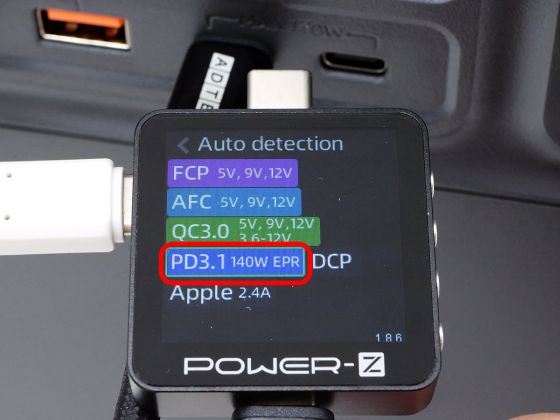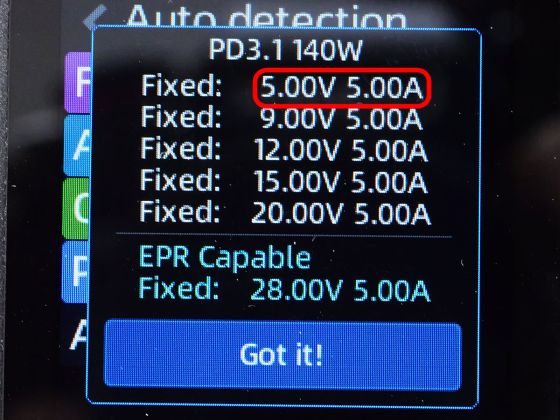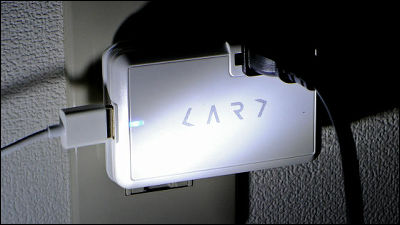DJI's portable power supply 'DJI Power 1000' is said to support '5V / 5A' output, but I tried it with Raspberry Pi 5 to see if it's true

The portable power supply '
DJI Power 1000 - 1024Wh Portable Power Supply - DJI
https://www.dji.com/jp/power-1000
The DJI Power 1000 is a portable power source with features such as a battery capacity of 1024Wh, a maximum output of 2000W, and a USB port compatible with various fast charging standards. In addition, by combining the DJI Power 1000 with separately sold accessories, it is possible to charge from a solar panel or fast charge a drone. For more details on the DJI Power 1000, please see the following article.
Review of the portable power supply 'DJI Power 1000' that can rapidly charge drones with a maximum output of 2000W and a battery capacity of 1024Wh - GIGAZINE

The DJI Power 1000 is equipped with two USB-C ports, both of which support USB PD 3.1.

The USB PD Fixed version looks like this. It supports a rare output of 5V and 5A.

The single-board computer Raspberry Pi 5 requires this unusual output of 5V/5A. However, there are few power adapters capable of outputting 5V/5A, and they are difficult to obtain in Japan. The Raspberry Pi 5 can be started even with a power supply that does not support 5V/5A, but problems such as a low voltage warning will occur. The power supply of the Raspberry Pi 5 is examined in detail in the following article.
Can the Raspberry Pi 5 be used with a power adapter other than the 5V/5A compatible one? Comparing the stability under high load with genuine and non-genuine power supplies - GIGAZINE

'Could the DJI Power 1000 be used as a rare 5V/5A power supply?' I connected the DJI Power 1000 to a Raspberry Pi 5 and checked the output voltage.

For the test, we prepared two types of USB cables. The one on the right is E Core's

First, connect the DJI Power 1000 and Raspberry Pi 5 using the 'universal cable.'

After booting the Raspberry Pi 5, I ran the power consumption check command 'vcgencmd pmic_read_adc' and got the following results. Power was being supplied at a voltage between 4.9V and 5.0V.

Next, start up the Raspberry Pi 5 using the 'APD-V140AC2-BK included cable.'

Then, during boot, a low voltage warning was displayed on the serial console.

The result of executing 'vcgencmd pmic_read_adc' is as follows. The voltage is below 4.9V. The DJI Power 1000 supports 5V and 5A according to the specifications, but the voltage may go up or down depending on the cable, and it may not be possible to fully operate a 5V/5A compatible device.

To check, I inserted the official Raspberry Pi power adapter, which supports 5V/5A output, into the DJI Power 1000 and tried to power up the Raspberry Pi 5.

When I ran 'vcgencmd pmic_read_adc' the voltage was over 5.1V.

Related Posts:
in Review, Posted by log1o_hf





